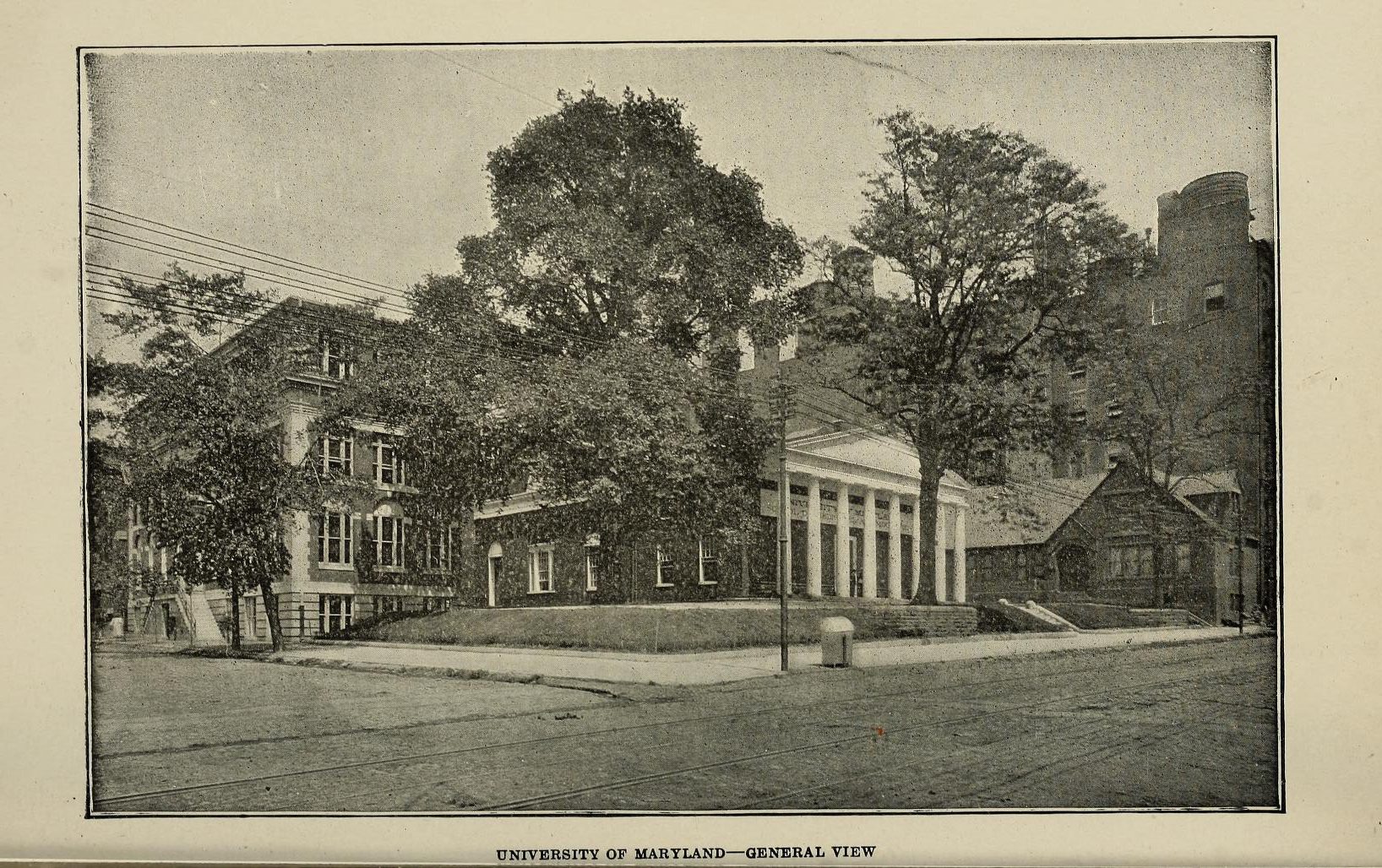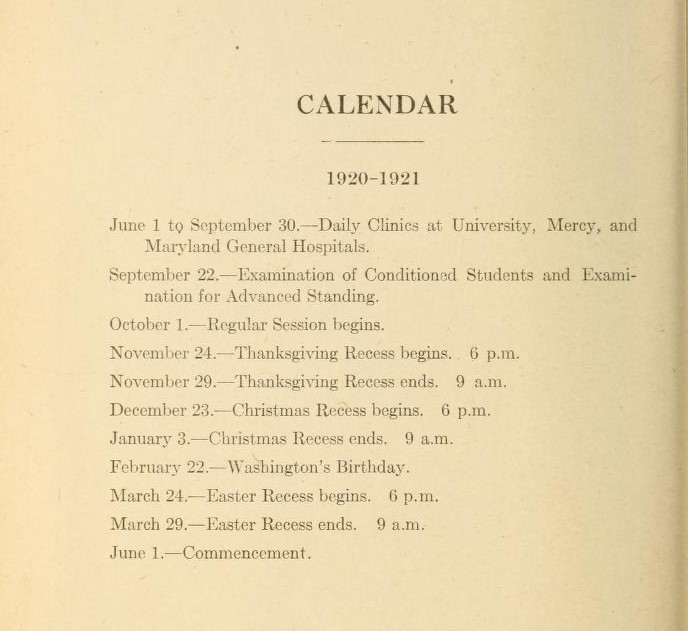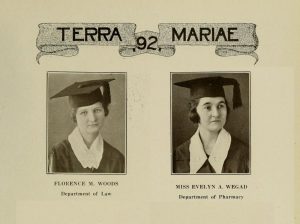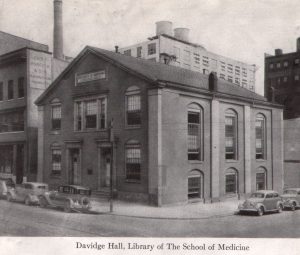The Health Sciences and Human Services Library Historical Collections’ strives to provide broad access to our diverse collections both in person and digitally. Materials in our collections appear as they originally were published or created and may contain offensive or inappropriate language or images and may be offensive to users. The University of Maryland, Baltimore does not endorse the views expressed in these materials. Materials should be viewed in the context in which they were created.

Photograph of the University of Maryland Baltimore, circa 1919. Photograph from Bulletin of the University of Maryland School of Medicine, July 1919. Available at: http://hdl.handle.net/10713/612.
A new, albeit strange, school year has begun at the University of Maryland, Baltimore. At this unique time, it is valuable to look back at our campus history to see how things have changed and remained the same. This post marks the beginning of a series of posts looking at UMB in the academic school year 1920-1921.
The year 1920 marked the beginning of a new decade known in America as the “Roaring Twenties” because it was a period of economic growth and social change. 1920 was one year after the end of the 1918 Spanish Influenza, as well as nearly two years after World War I.

1920-1921 Academic Calendar for the Schools of Medicine, Dentistry, Law, and Pharmacy. Classes began on October 1, 1920 and commencement occurred on June 1, 1921. Image from the Bulletin of the University of Maryland School of Medicine, July 1920. Available at: http://hdl.handle.net/10713/2621.
In April 1920, the University of Maryland (Baltimore) merged with the Maryland State College of Agriculture (College Park) through a Maryland State Act (Session 310, Chapter 480). The two campuses operated under the University of Maryland name and had fourteen colleges, schools, and departments. Albert F. Woods was appointed president of the University. The Schools and Departments of Law, Medicine, Dentistry, Nursing, and Pharmacy were located in Baltimore. The Graduate School was a newer school established in 1918 and was located at the College Park Campus. The School of Social Work was not established until 1961. The University of Maryland began the 1920-21 school year on October 1, 1920. All of the schools, with the exception of Nursing, operated on an October 1 to June 1 academic calendar.

Women graduates of the class of 1921. Images from the 1921 Terra Mariae yearbook. Available at: http://hdl.handle.net/10713/2475.
Students at the University of Maryland, with a few exceptions and the entirety of the School of Nursing, were white males. 1920 marked the first year that women were admitted to all schools; yet in many situations were still being discouraged by some faculty and administrators from entrance. As indication of this trend a perusal of the 1921 Terra Mariae Yearbook shows two woman graduates at Baltimore: one from the School of Law and one from the School of Pharmacy. The faculty, except for B. Olive Cole, a 1913 graduate, serving as professor and secretary of the faculty in the School of Pharmacy, were also primarily white men. The University in 1920, like many institutions of higher learning, did not accept African American students, which was legal under the 1896 Supreme Court Decision, Plessy vs. Ferguson.

Photograph of “Davidge Hall” Library building on the corner of Lombard and Greene Streets, circa 1920. Image from A History of the Library of the University of Maryland, Ruth L. Briscoe. Available at: http://hdl.handle.net/10713/335.
The campus, while smaller, had a similar footprint centralized on Lombard Street. The University library was located in a former church building at Lombard and Greene Streets. The building was called Davidge Hall; it should be noted that this is not the same building known as Davidge Hall on today’s campus. The library collection included 14,118 books, 58 journals, as well as pamphlets and reprints. The head librarian was Ruth L. Briscoe. In addition to the library, the building housed a Museum with specimens used to teach anatomy.
For more information on UMB in 1920 see:
- 1921 Terra Mariae Yearbook
- 1920-21 Academic Catalogs for the Schools of Medicine and Pharmacy.
- 1924 Academic Catalog for the School of Nursing
- Academic Catalogs for the School of Dentistry

